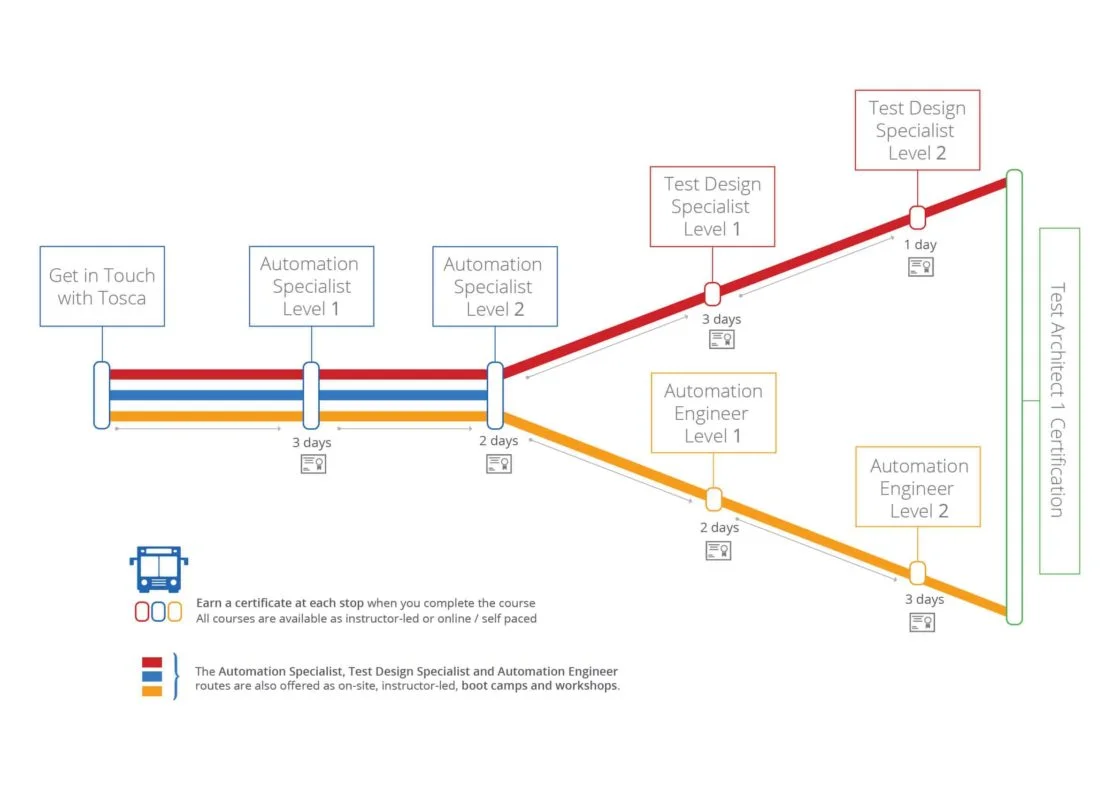
Accelerating Oracle Applications innovation: The ROI of smarter testing
New Forrester study: Cut Oracle testing costs by up to 40%, here’s...
Learn why and how to become a certified Test Automation Specialist with Tricentis Tosca.
This post was originally published April 2018.
At the beginning of the year, I decided that although script-based testing makes me feel like my Computer Science degree is being put to good use, it was time to find a testing tool that’s faster to use—so I could spend more time actually testing and less time coding. Enter Tricentis Tosca.
Tricentis Tosca’s modular, scriptless approach to testing not only helps testers rapidly create automated tests for a broad range of technologies (SAP, HTML, APIs…). It also reduces the amount of test maintenance required and delivers results in a format that managers understand and appreciate (in terms of business risk coverage). Based on top analyst reports, Tricentis Tosca is quickly emerging as the clear industry leader. If you’re not already convinced that you need to get certified on Tosca, consider this: Tosca’s certification can be completed 100% online. It does not require a full-time commitment or any ridiculously-priced training sessions.

The above graphic clearly depicts how Tricentis’ online courses are structured. Basically, if you want to get kick-started with test automation, Tricentis offers the “Automation Specialist 1” and “Automation Specialist 2” certifications. This is really the training that anyone working with Tosca should complete in order to obtain a basic understanding of all aspects of Tosca.
The subsequent courses are then more specialized for different career options within test automation. For the conceptional side, there is “Test Design Specialist Level 1” and “Test Design Specialist Level 2.” For the more hands-on testers, Tricentis offers the “Automation Engineer Level 1” and “Automation Engineer Level 2” certifications that focus on the nitty-gritty aspects of test automation.
Finally, the ultimate stage: when you feel there is nothing more you could possibly learn about Tosca, take the “Test Architect 1 Certification” course. For this final course (for now), you not only have to pass an exam, but also have to submit your own test cases. Your tests are manually verified by a Tricentis employee to determine if you pass.
However, first things first. Here are some more details on the two Automation Specialist courses:
The Automation Specialist Level 1 course is the first step to becoming specialized in automation with Tosca. The course elaborates on HTML control recognition, design automated test cases, automation features, and final execution. By the end of the course, you will be able to fully execute five automated GUI test cases that you have created during the lessons.
Time: 3 days
The Automation Specialist Level 2 course is the second step to becoming specialized in automation with Tosca. With this training, you master the essential Tosca skills that you need to become a specialist in API testing. You will learn how to build up efficient test cases using test case templates.
Time: 2 days
Soon into the first course, it quickly becomes apparent why Tosca’s popularity is growing year by year. As paradoxical as it sounds, the Tricentis risk-based approach allows you to increase risk coverage while at the same time reducing the number of test cases. How is this possible? Well, according to the Pareto principle, 80 % of the risk comes from 20 % of the application. By providing clear guidelines on how to weigh business requirements and then link them to test cases, Tricentis ensures that tests are not formulated to fulfill quotas, but rather to maximize quality and achieve high business risk coverage of the system under test.
Completing the course is rather straightforward. Tricentis really gave it some thought and structured the lessons in an easily comprehensible way. At the start of each session, you watch a video that explores the given topic. Second, you need to complete an exercise that provides an opportunity for you to apply the best practices you just learned. Finally, you complete a quiz at the end of each chapter to confirm that you’re on track.
I strongly recommend that you take notes during each video. This allows you to quickly recall information from a previous lesson—without having to rewatch a full video just to find the tiny bit of information that slipped your memory. Also, after passing the exam, don’t forget to complete the feedback form. If you skip this step, you won’t receive your certificate.

New Forrester study: Cut Oracle testing costs by up to 40%, here’s...

Hear Achmea leaders share insights on their strategic shift from...

Tosca Agentic Test Automation revolutionizes testing with...

Forrester finds Tricentis boosts speed, efficiency, and ROI for...

Join our webinar to see how Tricentis Data Integrity helps ensure...